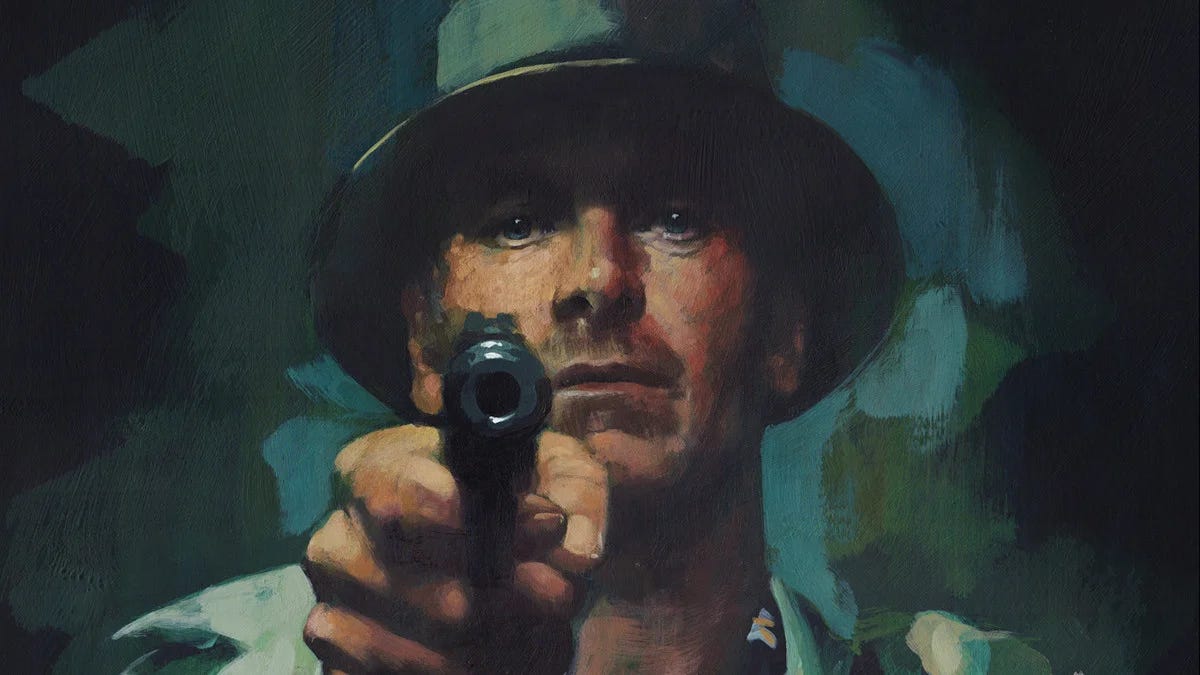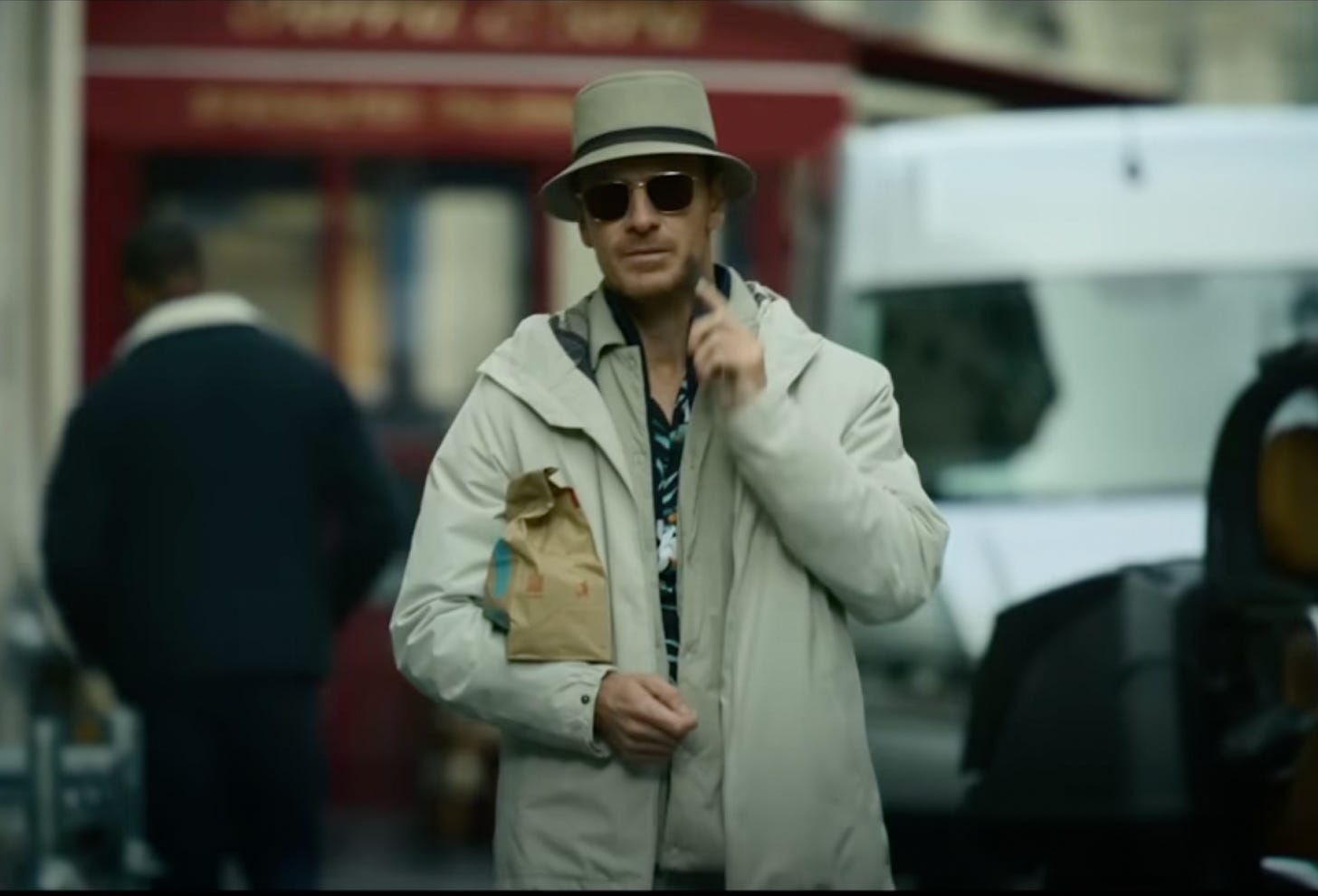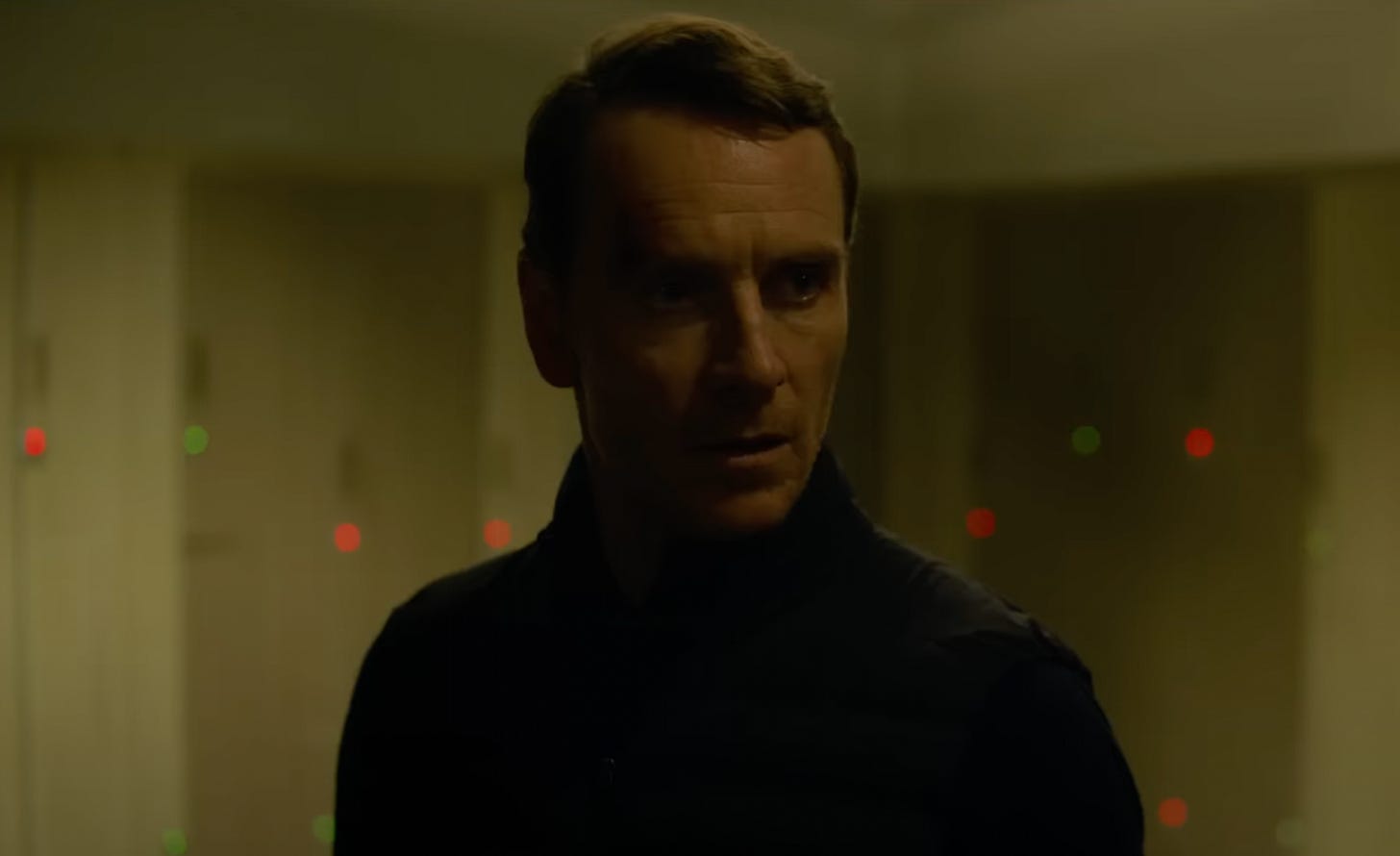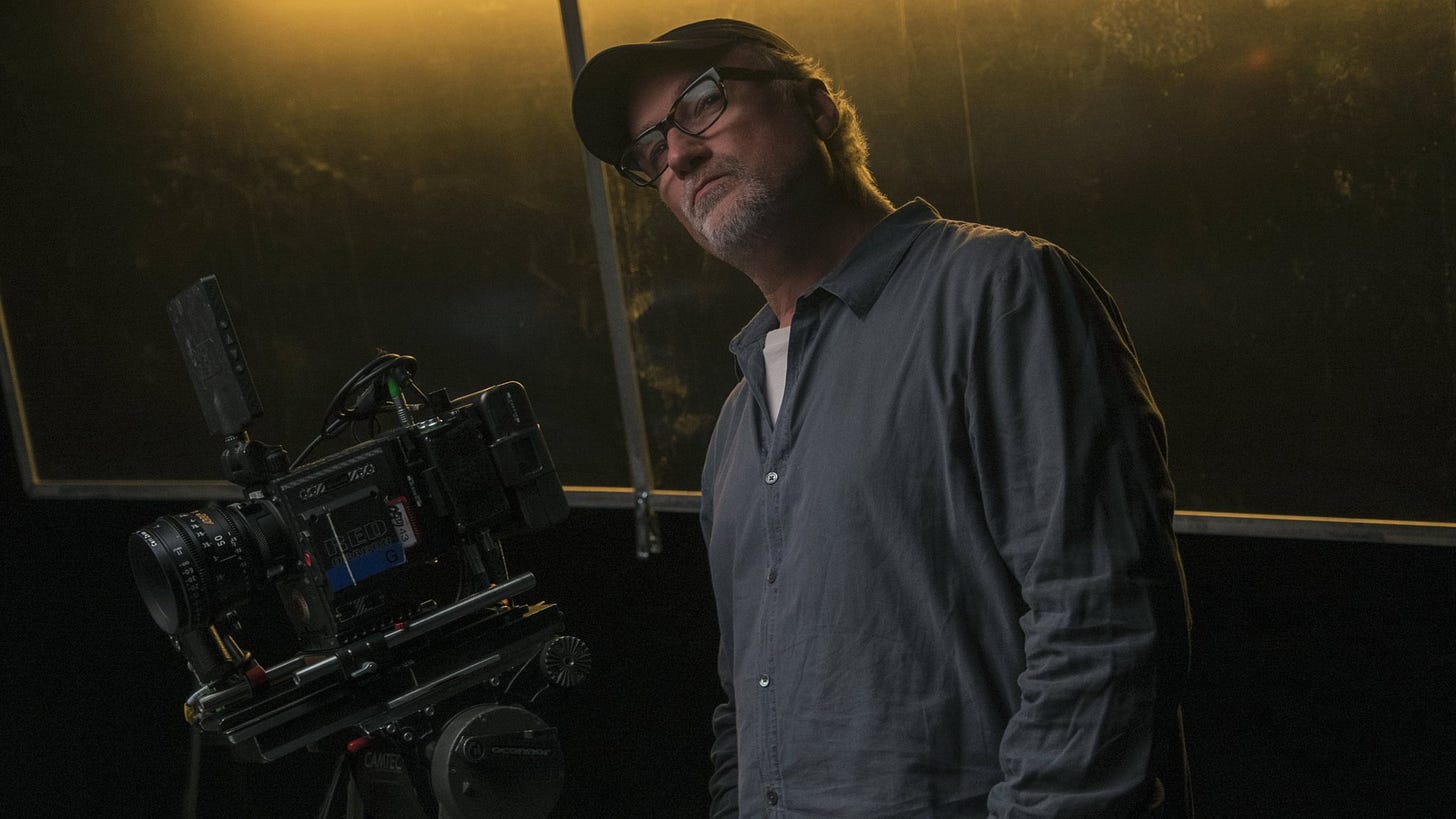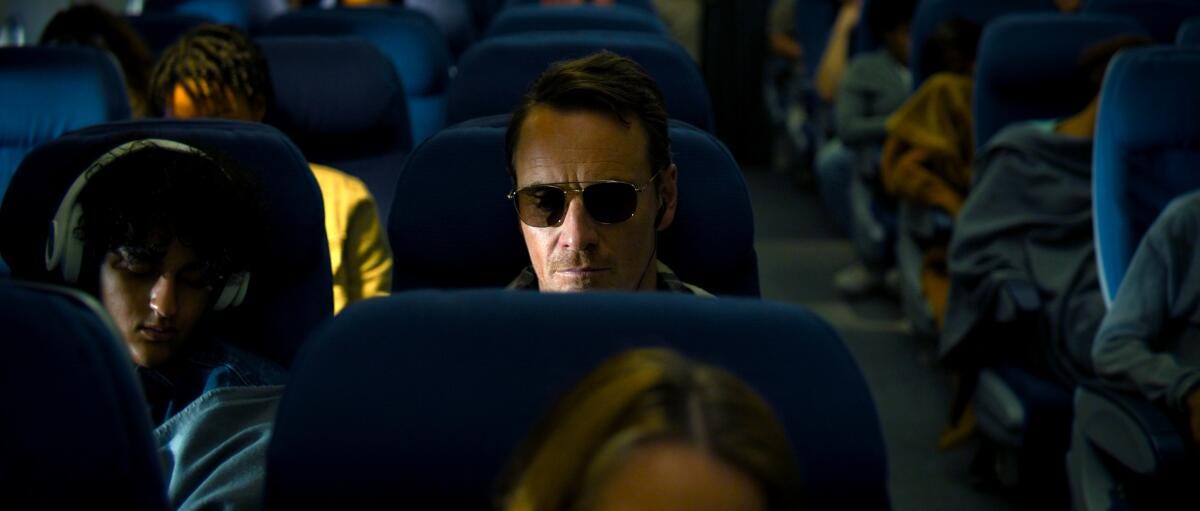“Stick to the plan.” The repetition a mantra while the plan unravels entirely. David Fincher’s latest film, The Killer (2023), starring Michael Fassbender in the lead role, follows a hitman on a job that doesn’t go as planned when he misses his target, forcing a carefully laid out scheme to shattered rubble, his composure shattering with it.
From that point on, the story takes on a revenge arch that satisfies any crime thriller aficionado. Fincher’s The Killer has everything one could ask for from the genre. And it delivers the goods.
The film is paced brilliantly and, while there is some bloat, it earns its almost two-hour runtime for the most part. Moving seamlessly from chapter to chapter as the story unfolds before us. The tension carried through the film in the slick way only Fincher can achieve. Even the excessive voiceover exposition, which I found to be mostly indulgent and overdone, couldn’t stop this film from feeling sleek and quick. The screen a joy to look at, filtered the Fincher way, it’s dark tint setting the mood. It looks great, big expansive shots, visual storytelling.
I would expect nothing less with a director like Fincher at the helm, his keen eye for what works and what doesn’t always makes for a great watch. In fact, I was anticipating this films release as soon as I saw the initial trailer, but was disappointed when the film left me harboring mixed feelings.
The tone of the film aimed for a somewhat unstable balance between obsessive compulsive and darkly unplanned. Not exactly pulse pounding, but a sophisticated way of showing viewers the chaos. The tension in the movie coming not just from the events that unfold before us, but the dark tint in every shot. Fassbender wearing sunglasses inside, on planes, staring, watching, waiting. The plot itself moving slowly, while the actual movie doesn’t slow or change pace from the first shot until the last.
Even while waiting around with the killer for the right moment to strike, the film never slows. Always propelling itself forward as the scenes unfold. The first twenty minutes of the movie is dedicated solely to the process and mindset of the killer himself. Fassbender going into heavily detached voiceover—low, slow, deep from the back of the throat—as he keeps watch on a target through a Parisian penthouse window.
After only a few minutes of watching Fassbender do everything from sleep to stretch on the floor with his rubber gloves—while the voiceover gives so much exposition about the mindset of the killer—I couldn’t help but find it almost corny. I started to feel that the biggest weakness of Fincher’s The Killer, is the indulgence in over explaining, which struck me as often too thick. As if it were being forced into the movie. The bulk of all the dialogue spoken in the film is voiceover from Fassbender, reading it in a voice that is so detached that it throws off the balance of the film and character.
What I mean by that is not so much the events of the plot as they unfold, they are tightly wound on their own, but this mindset that is overexplained in a way I found a little dangerously close to cheesy. The killer listing out “what it takes” do what he does. It felt a little insecure.
Perhaps it’s in the way Fassbender chose to portray the character. A little too much on the depressed side of paranoid. My only real gripe with Fassbender’s portrayal on screen, who is usually always on point, is that he seems to have gone a little too reserved in this role. And no, I’m not arguing for an unhinged murderer, but I felt it was a little too detached for what the film seemed to be going for. Even with the darker, more depressive and numb themes the film was daring to explore, it felt a little reserved. A cool, rational, careful, professional killer—seemed nowhere to be found.
The excessive voiceover seemed to remind the viewer of his list of rules for performing his job, especially as we watch him break them on his hunt for revenge. And I’m not saying that part of the voiceover was overdone. In fact, just the opposite, I found the reminders and refrains that kept coming up, like “Stick to the plan,” a great use of the technique. What I had an issue with was weak attempts to explain away the killer’s mental state, and the overuse of the voiceover in pivotal, tension filled scenes.
The film was interested in exploring this darker part of the hitman lifestyle and psyche, the constant paranoia and even depression caused by the profession, but painted it with a few too many strange colors coming into the palate, all feeling slightly misplaced. The music as a useful distraction being a minor one, though tonally abrupt and poorly contrasted. The voiceover used to explain the killer’s mindset while we watched the visual cues play out scene by scene being a major one. This includes several mentions of how little empathy the killer is supposed to have, reminding himself what’s required to commit to the profession.
It felt insulting to the audience. It’s clear it was intended to show a sort of struggle within the character in a situation where he had to pull the trigger, but it just distracted from the slickness, the revenge rampage. We, the viewer, are on his side in all of these situations. We’re rooting for him to get his revenge and get away with it. We’re rooting for him to pull the trigger. The hesitation of it, the cold-bloodedness of doing it anyway, it’s already there. We don’t need the voiceover repeating what we already heard.
But my bigger complaint about what these mishaps cause is that they take away from Fincher’s filmmaking. For example, in the opening scene, during the twenty minute voiceover, we watch Fassbender pursue the vigilant boredom required for the job, checking his watch, sleeping in shifts, stretching and doing pushups, repeating his methods in his mind. I found Fincher’s visuals more than enough to carry the first twenty minutes even if it were entirely in silence. It would give the process and the visual cues a more sinister tone as well. The movie didn’t need all the voiceover that explained what was happening in the killer’s mind. The visuals of the routine on screen enough.
That being said, the acting is all top notch. The sets making great use of the story, big historic cities, the tension. All of it. It’s all technically sound—which is why I found myself confused having so many reservations about the film as the credits rolled. My gripes were harder to parse. I just kept thinking about the scene with the nail gun as Fassbender sneaks into an office building. How absolutely stunning and cold. I’m still thinking about how smooth and glossy it all was. How simple—just what was needed.
Tilda Swinton comes on screen for no more than ten minutes or so, playing another assassin. Swinton gives it her best, but I found the actual dialogue she was given, which she did her best with, to be a little off. Even the humor felt like it was being forced into the movie. Almost disrupting the pace.
Swinton delivers a humorous bit about a bear sodomizing a hunter in the woods, and she does her best to deliver it at the dinner table in a fancy restaurant, but it falls flat because it doesn’t strike the same tone with the rest of the film. Too much of a palm slap. The dark brooding aspect, the struggle—which the voiceover muddies up as well—gets lost in moments like these. I couldn’t help but feel internet memes and jokes bleeding into the dialogue. The phrase “normies” is used, implying those who do not kill others for a living, as the internet weaves into every film now.
It reeks of insecurity. This dark character study, undermined by a mediocre joke that diminishes the tension of the scene it takes place in. Fassbender holding a gun on Swinton under the table. Swinton realizing she is about to die, and we get an almost cutesy little joke. Undermining the tone and forcing the humor out of the scene, instead of letting the absurdity of it carry.
Don’t get me wrong, the film is solid in all the ways a Fincher movie can be solid. All the usual aspects of a spy thriller—sitting on planes, multiple big cities, fake ID’s and Passports, all in search of dangerous targets, life-risking activities—but the voiceover explaining why music is used, why everything is done as its being done, just came off as corny.
I couldn’t help but find the statistics that kept being mentioned a little desperate for authority in the character. The one that stands out the most is the storage units. The overall number of units in the country, and then the six that are owned by the killer. (though we only see one, which is an example of the voiceover doing more work than the visuals need it to, instead of working in tandem). It’s aimed at implying the killer is astute and informed in a very calculating way, covering all his basis, every angle, but it struck me as diminishing the character more than expanding on his intelligence or cunning when concocting a plan. The killer telling us this in voiceover while also letting us see how well prepared he is, how cunning. It seemed overly compensating for what I found to be a lack of, yes, I’ll say it, coolness.
I wish I had a better term, but coolness—badassery. The killer wasn’t cool. These statistics about storage units only made that fact glaring. I couldn’t help but think, the less we knew about this character, his inner workings, the cooler he would become.
I haven’t read the graphic novel by Alexis “Matz” Nolent the movie is based on, but it did seem as if, Nolent and Andrew Kevin Walker, the credited screenwriters on the project, were trying to include a lot of character exposition from the graphic novel itself. Which is to be admired. All good adaptations respect the source material and include as much as possible when changing from a written medium to a visual one, such as film adaptation. I’m not saying that no voiceover should ever be used in any movie, but when it is so heavily relied on the way it is in The Killer, it becomes overly reliant. Overdependent on the voiceover, leaning on it as a crutch in places, and other times slightly diminishing a great scene, like the murder of Swinton’s character.
The film struggles straddling the line. The Killer clearly wants to present the cool, badass side of being a hired gun, but also wants to explore the struggles, hazards, and cold-bloodedness that the profession takes, and what that costs emotionally, physically. How it manifests by endangering loved ones. But the voiceover makes it too sentimental in strange and miscalculated ways.
For example, the focus on anxiety is constant, as well as the lack of empathy. These two aspects that are played very well by Fassbender on screen, make the film feel insecure in the way it reminds us so often. This is to show the more human side of the character, those struggles, mental toughness, but it ends up undermining the toughness, the coolness, the sleekness, and, frankly, the badassness of the main character.
We see the girlfriend, the main motivator for the revenge plot, once and then never again until the final shot of the film. In which Fassbender is shown to be lounging by his pool with her, still slightly bruised. The killer satisfied, smiling, sunglasses on.
Something about that final shot felt unearned as I watched it. Thinking to myself, this is it, the James Bond moment, the main character smirking with his sunglasses, the girl, the money—the calculated killer getting away with it.
Perhaps it’s because the anxious paranoia aspect was so heavily laced through that it felt a little flat. A little unearned. He seemed to be a chaotic wreck as he sought his revenge, and the final shot implying him to be cool and sleek and always under control, seemed like a miss. We had seen too much. Heard too much, rather.
It felt hollow. It was hitting all the right notes, all the right parts in the right order, the right visuals, great fights, violence—all of it—but it felt somehow, like something was missing. Like it got too focused on the sad emo side of being a hitman, instead of the flashy exciting side. Unsure which side should be the center of the character study. Perhaps the two sides, much like my feelings about The Killer, don’t mix very well.
Andrew Wittstadt is the host of a brilliant podcast called Heavy Bored and has been a regular contributor to the Rare Candy Substack both in print as well as appearing on Gain of Fiction





